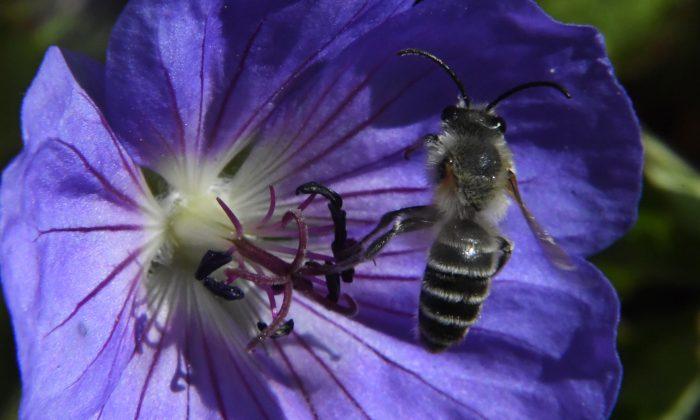Four decades after the first outbreak of the Ebola virus in Central Africa, misconceptions and misinformation about the disease abound. No one from the CDC to the WHO has been able to articulate the scope of the problem well.
During the first outbreak, Zaire wasn’t the first place where Ebola crossed into the human population. It was the second area. But it was the first place visited by foreign disease investigators, and where a nun, who succumbed to the virus, had her blood sent to Peter Piot in Antwerp to be tested for yellow fever. Dr. Piot would become the co-discoverer of Ebola, so named for the river in the northern part of the country.
That was in October 1976.
Earlier that year, and just a couple of weeks before America’s bicentennial celebration, when Operation Sail would complete the pipeline that would deliver yet another unknown virus to America—AIDS, a cotton manufacturing plant across the border in Nzara, Sudan, became “ground zero” for the Ebola outbreak.
At the plant, three workers would fall to the disease. They didn’t live in the same village, didn’t socialize in the same groups, and didn’t have much contact during the workday. Then how did each one of them get infected?
Recalling the outbreak of Ebola in Sudan, in “Ebola Then and Now” in the New England Journal of Medicine, doctors Joel G. Bremen and Karl M. Johnson wrote:
“In 1976, in the 120-bed Yambuku Mission Hospital in Zaire, the virus initially spread through use of unsterilized syringes and needles. Of the hospital’s 17 staff members, 13 became sick, and 11 died. The hospital was closed when the medical director and three Belgian missionaries died from Ebola.”
Bats as the Ebola ‘Reservoir’ Species
What the WHO/International Study Team later found on the roof of the 2,000-employee Nzara cotton factory were thousands of free-tailed bats.
Although no bat samples were ever collected off the roof and tested for Ebola antibodies at that time, African migratory fruit bats have since become the most likely vector, the natural “reservoir” for the Ebolavirus.
Dr. Piot with Sebastian Funk noted in a recent epidemiology paper, “Mapping Ebola in wild animals for better disease control”:
“Fruit bats, on the other hand, do not appear to fall ill when infected with Ebola. As such, bats are considered the most likely candidates for the reservoir species in which the virus lingers between outbreaks in humans. Antibodies against the Ebola virus have been found not only in three bat species in Central Africa (Leroy et al., 2005), but also in four bat species in West Africa (Hayman et al., 2012).”
Besides direct contact with fruit bats, there are two other modes of transmitting Ebola to other animals. They are bat guano, in which Ebola is passed through the stool, and fruit dropped during daily migrations. Then animals on the ground, from pigs to primates, can acquire and pass the virus on to humans.
The Ebola Outbreak of West Africa
The latest and most lethal eruption of Ebola, already outstripping all previous Ebola outbreaks combined in terms of the number deaths and those infected, began in December 2013 in a remote forest village of Guinea.
The first victim was a 2-year-old infant, who was bitten by a fruit bat. The child would fall ill and die, with Ebola claiming both his sister and mother. At their funeral, Ebola spread to the viewers.
Five months later, Ebola would show up in people in Liberia and then Sierra Leone. The WHO just declared Nigeria “Ebola-free.”
What makes this outbreak so different, beyond Ebola’s jump to health care workers in Spain and the United States, has been its move into densely populated towns, where the virus used to be only found in the most remote regions of the African jungle.
A New York City ICU nurse, who treated dozens of AIDS patients during the 1980s epidemic, said, on condition of anonymity, “Ebola is far worse and scarier than AIDS ever was. The Ebola virus appears so easy to transmit, even when wearing contamination suits, respirators, and double-gloves with taped seams in isolation. Better protocols and training need to be put in place than what has been demonstrated so far by the CDC.”
Like New York City taking over its own security from the federal government to defend against terrorism after the 9/11 attacks, New York hospitals have come together to get prepared for the first group of Ebola patients. They are doing so without the CDC.
So what has changed with Ebola in the past 40 years?
Deforestation Run Amok
In a prescient report by disease author Sonia Shah in the October 2009 Yale Environment 360, “The Spread of New Diseases: The Climate Connection,” wrote:
“Look up into the tree canopy of the urban tropics in South Asia, Australia, or equatorial Africa and as often as not you will find masses of Pteropos fruit bats, hanging from the branches like so many furry stalactites. Their forests cut down by bulldozers, torched by slash-and-burn farmers, or desiccated from a disrupted climate, fruit bats increasingly intrude upon human communities, adapting to the orchards and cultivated fruit trees of the cities, farms, and suburbs that have subsumed their forests.”
With those bats come diseases that spread to humans, and a growing body of research suggests that their microbes—as well as other pathogens that jump from animals to people—are spreading more rapidly because of climate change and deforestation.
The outbreak in West Africa is Zaire Ebola, one of five species of the virus. So how did it travel from the middle of the Congo to the western forests of Guinea, Liberia, and Sierra Leone?
Studies on the migration of fruit bats confirm their thousands-of-miles-a-year range. All three nations have deforested more than 75 percent of their land, forcing the inexorable meet-up between Ebola-carrying bats and people. This was the cause for the 2007 Ebola outbreak in western Congo.
Ebola ‘Out of Africa’
In 1989, a new strain of Ebola showed up from the Philippines with monkeys quarantined in Reston, Va., since called “Ebola Reston.” That fifth species has not been harmful to humans, but a 2009 outbreak on a pig farm in the northern part of the Philippines gave WHO investigators pause.
With evidence that deforestation has pushed virus-host bats to the edge of civilization, with warming and changing rainfall patterns impacting the climate of Africa, the next Ebola outbreak will likely come sooner and be more virulent than the current scourge of human suffering. It will also be more global.
Since the next outbreak is what governments and health organizations of the world need to focus on and plan for, it’s going to take a lot more money and resources, with an array of professional disciplines greater than the recently appointed “Ebola Czar” to contain the disease in the near future.
Ebola 2020 should be planned for now, and not put on the back burner. It should start with the study of the migratory routes of fruit bats, continue with persuading a change in the local diets that include the bats and bush meat, and deliver forest management and sustainability practices to rebuild the natural barriers that once separated people from the dark recesses of nature.
Without a focused, collaborative effort, the next Ebola eruption might become a global pandemic. Then it will be too late.
James Grundvig is a contributor to Epoch Times and the author of “Master Manipulator: The Explosive True Story of Fraud, Embezzlement and Government Betrayal at the CDC.” He lives and works in New York City.





